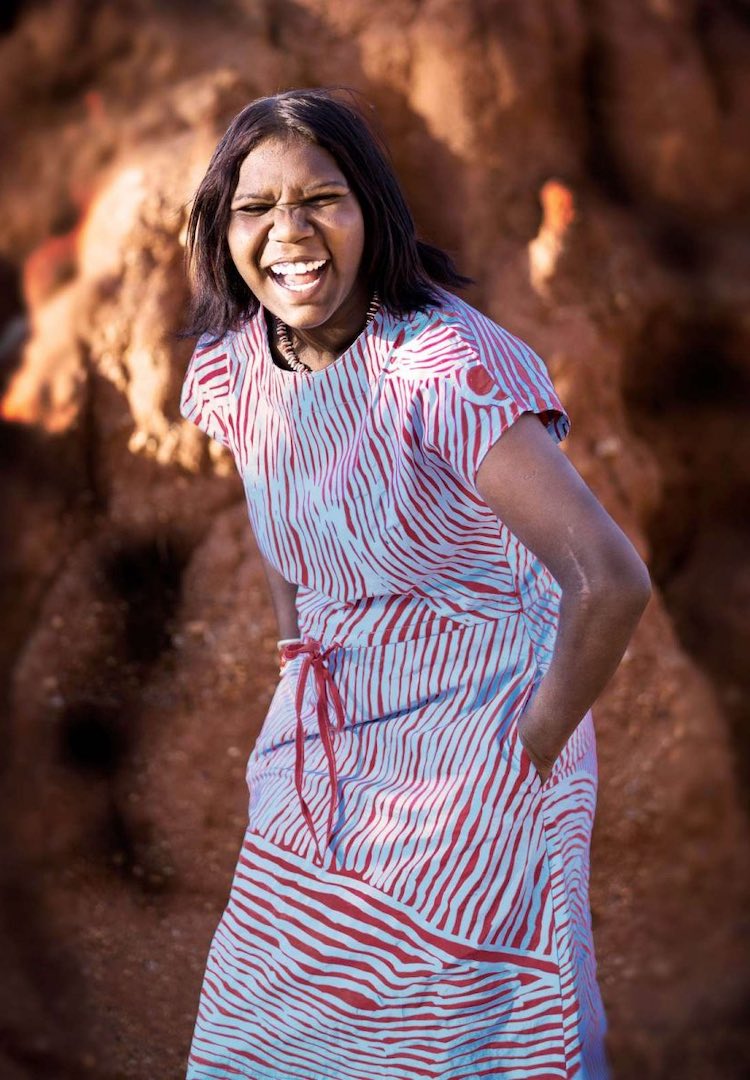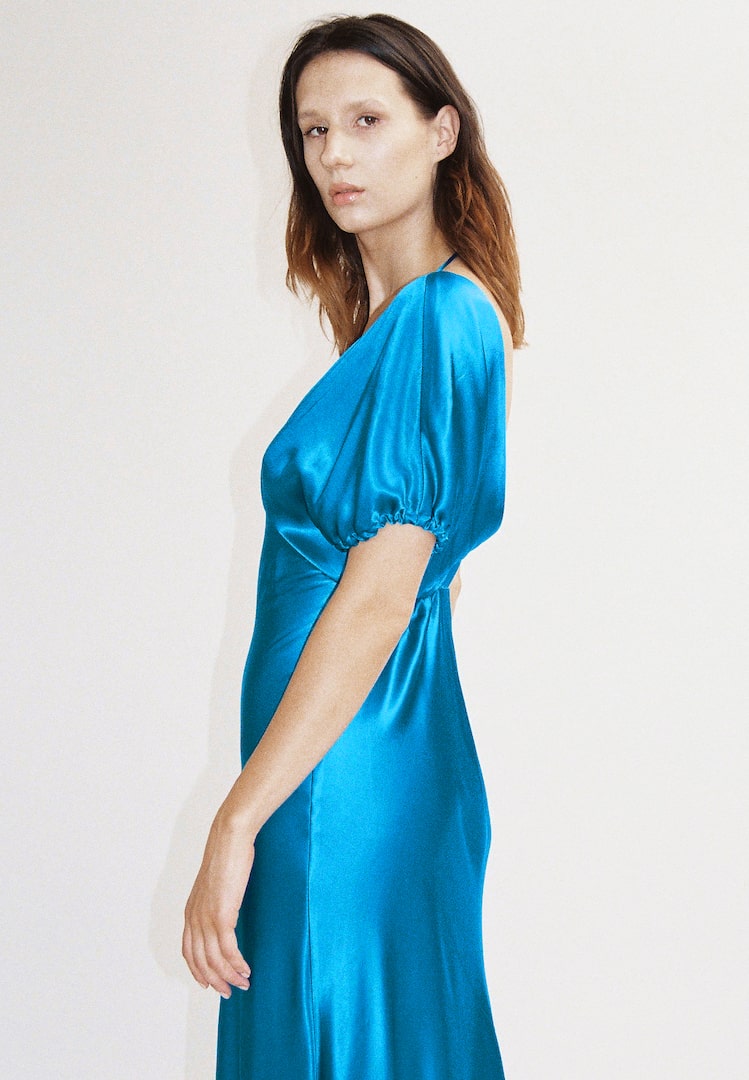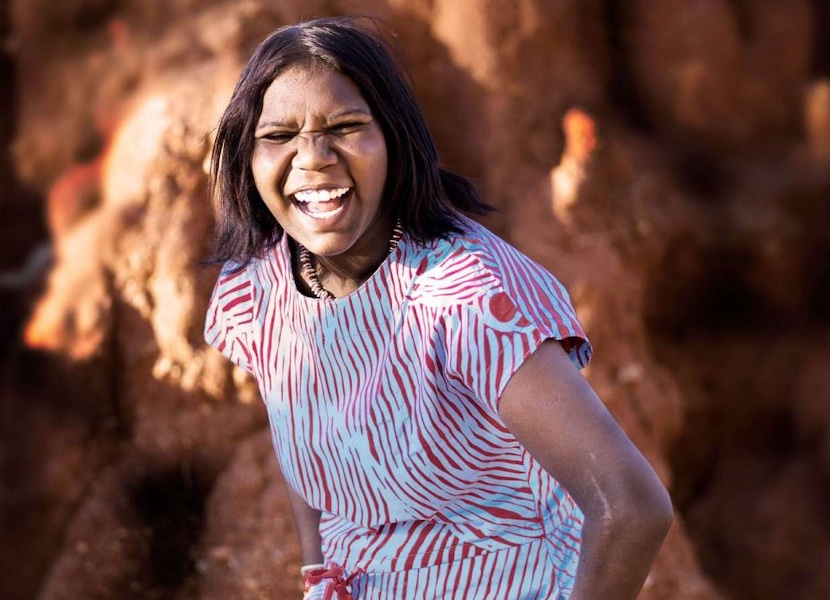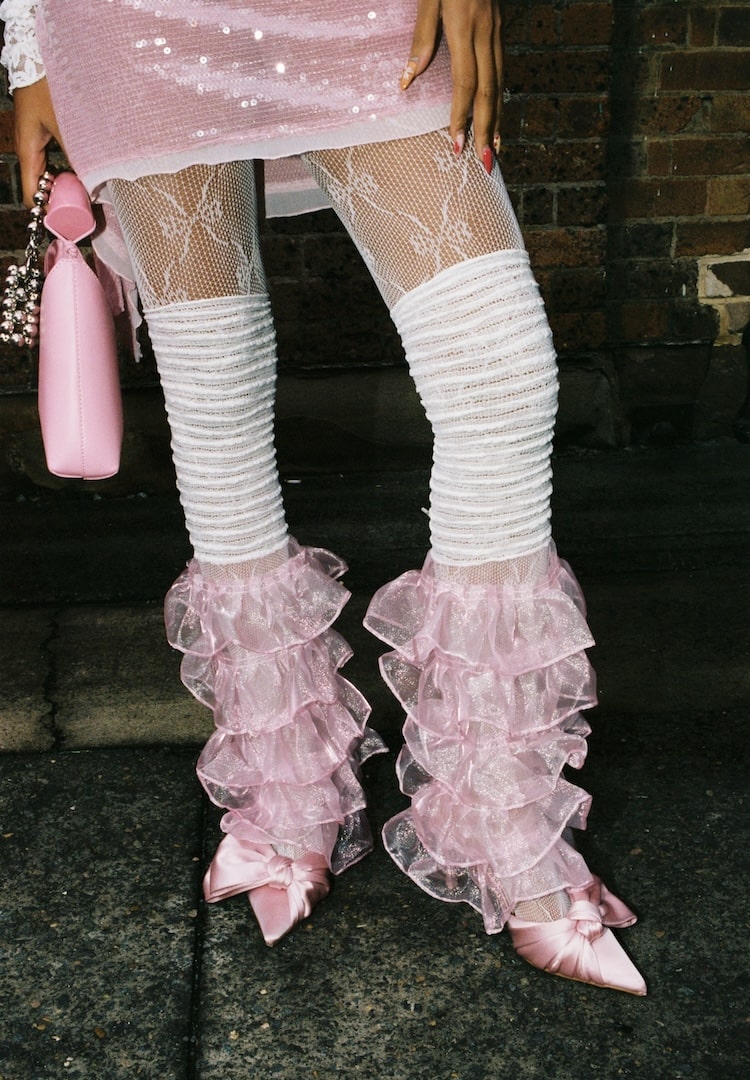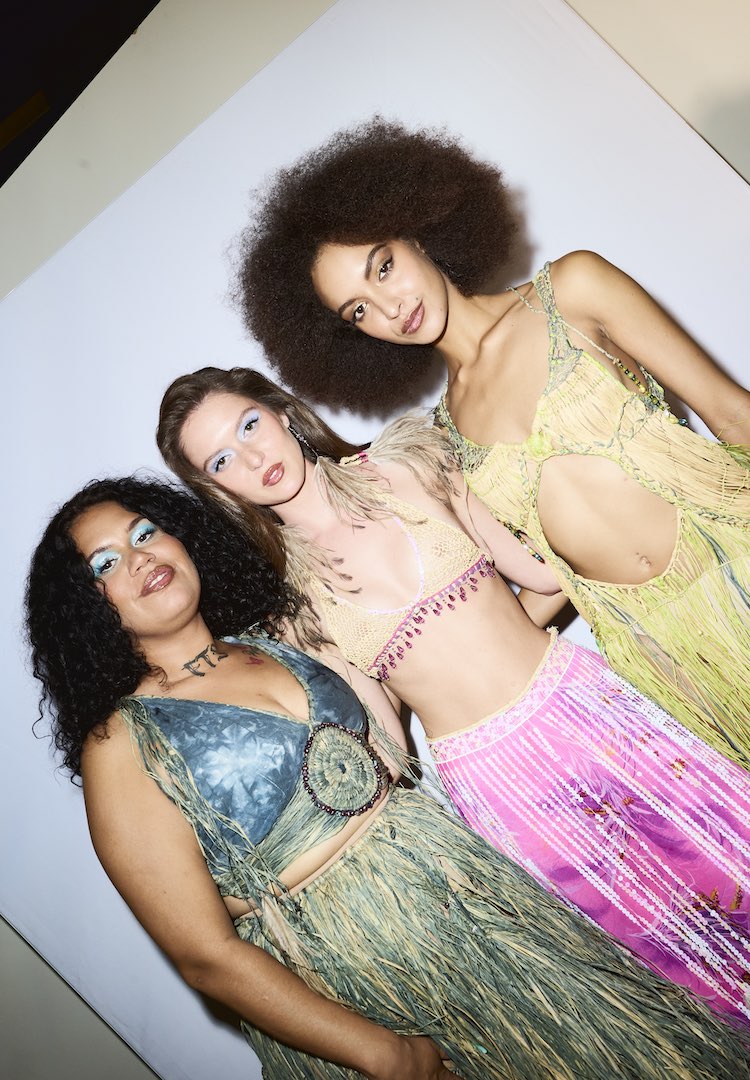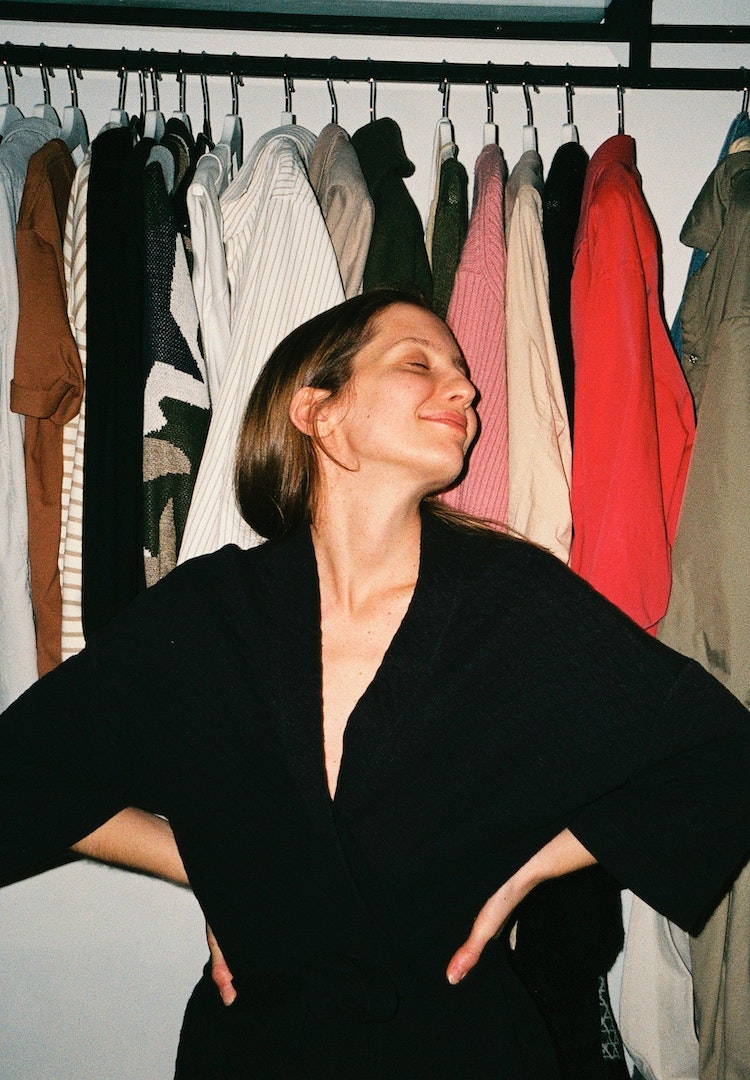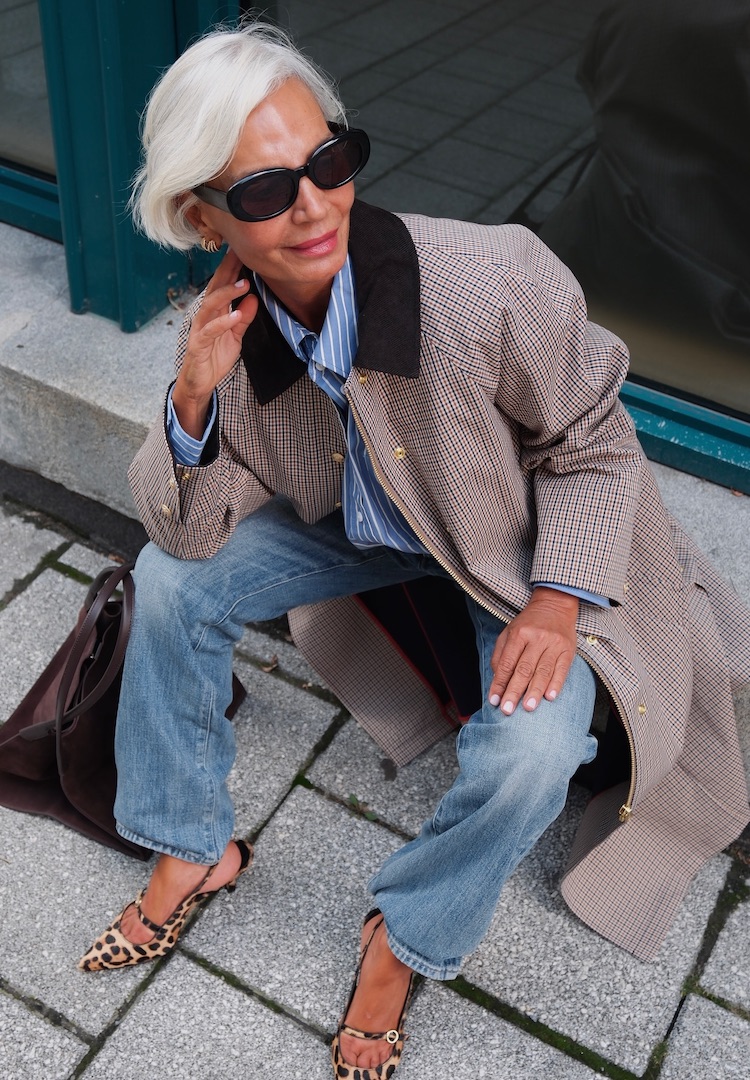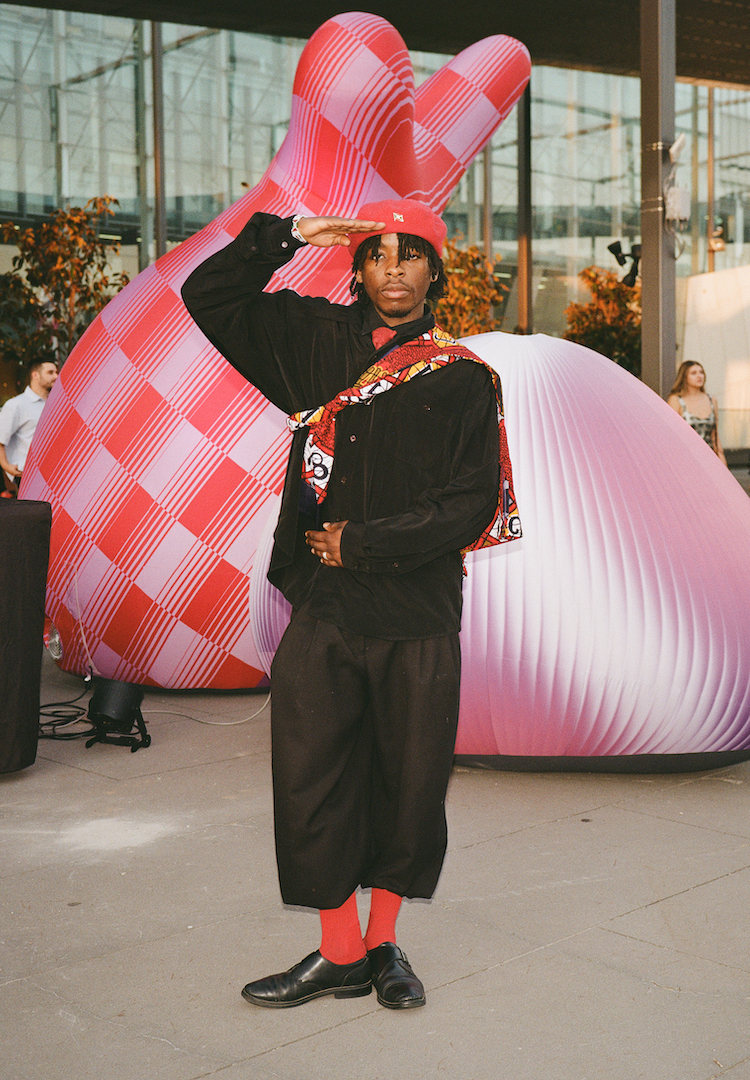How a not-for-profit artist collective made it to Afterpay Australian Fashion Week
PHOTOGRAPHY BY Christian Koch
WORDS BY IZZY WIGHT
Where fashion and art collide.
Fashion Journal is proud to continue an ongoing partnership with First Nations Fashion and Design aimed at highlighting and amplifying First Nations voices, talent, culture and stories across the industry. Fashion Journal acknowledges the Aboriginal and Torres Strait Islander peoples as the first Australians and traditional custodians of the lands on which we live, learn and work. We pay our respects to their Elders past, present and emerging.
Ikuntji Artists was founded in 1992 in Haasts Bluff, roughly 230 kilometres west of Alice Spring and nestled between the towering red West MacDonnell Ranges. A 150-person community rich in language and cultural diversity, Haasts Bluff became home to the first-ever arts centre established by women in the Western Desert art movement.
Initially established as a women’s centre – to provide services like catering, aged care and childminding – Ikuntji Artists captured the attention of the international art world after releasing a series of hand-printed T-shirts and acrylic paintings. Drawing inspiration from their personal ngurra (country) and tjukurrpa (dreaming), the Luritja people began interpreting ancestral stories into intricate, highly abstract works of art.
For more fashion news, shoots, articles and features, head to our Fashion section.
The centre became an outlet for women who had been exercising artistic prowess for decades, painting from their aged care homes under the instruction of husbands and fathers. Now representing a selection of eight key artists, Ikuntji has become both an unassuming fine arts destination and a bubbling cultural hub.
Over the last few years, Ikuntji Artists has made a celebrated foray into the world of Australian fashion. Working closely with not-for-profit Indigenous corporation First Nations Fashion and Design (FNFD), the centre has brought its art to life in the form of vibrant textiles, carefully-constructed garments and local designer collaborations.
Working towards a self-sustaining ecosystem of Aboriginal fashion creatives, FNFD made history at last year’s Afterpay Australian Fashion Week (AAFW). In an AAFW first, FNFD showcased a lineup of seven different First Nations designers, making “an indelible mark on the Australian fashion industry”. This year, Ikuntji Artists is joining for another historic show, bringing its Frock On! event to the main stage.
View this post on Instagram
Launched in February of 2021, Frock On! is the annual partnership between Ikuntji Artists and Flying Fox Fabrics. A small social enterprise based in Darwin, Flying Fox Fabrics works in cross-cultural collaboration with Aboriginal artists to create authentic, ethically-produced fabrics. Handwoven and handpainted, Flying Fox Fabrics are crafted in partnership with Fair Trade social enterprises in Cambodia.
Taking place on the closing night of AAFW, Frock On! Will highlight the talented work of designers and artisans alike. So how does it work? “Designers are invited to apply to the program and are then paired with Ikuntji Artists textiles,” explains Christopher Dewar, the marketing assistant at Ikuntji Artist centre. “The designers then create garments inspired by the beautiful designs from the artists at Haasts Bluff. The focus of the program is to highlight and celebrate ethically-made, indigenous fabrics.”
View this post on Instagram
This year’s event boasts a dynamic mix of six Ikuntji Artists, each with a distinct style and chosen medium. “These fabrics are created from works completed at screen printing workshops at the Ikuntji Artists art centre”, Christopher tells me. “The artists paint directly onto clear film which is then digitised and exposed onto a silkscreen. The fabrics are then hand-printed at Publisher Textiles and Paper in Sydney.”
The artists include Alice Nampitjinpa Dixon, who “tells her story in bright colours, often utilising orange and yellow to mirror the ochres that are used in ceremonial body painting”, says Christopher. There’s also Eunice Napanangka Jack, whose “paintings are interpretations of her country near Lake Mackay. She uses layers of colour to build up a vision of the bush flowers and grasses”.
Mavis Marks “likes to paint the ceremonial dancing of ladies at Mt Liebig, and represents their body painting designs,” Christopher tells me. “She also paints the story given to her by her grandfather of Kalipinpa, the Water Dreaming, which comes from her mother’s side.” Artist Keturah Zimran, on the other hand, prefers to paint puli puli and tali tali (rocks and sandhills), working primarily with acrylic on Belgian linen or cotton canvas.
View this post on Instagram
Artist Leonie Kamutu and her sister, Tilly Napaltjarri, both learnt painting from their father’s brother. Recognisable by its purposeful brushstrokes and bright, labyrinth-like mazes of colour, Leonie’s inkwork is translated onto fabrics like silk and hessian linen. The final artist in the Frock On! lineup is Mitjili Napurrula, whose award-winning work is inspired by “the cultural heritage that continues to inform the myriad expressions of Western Desert”, Christopher explains.
Frock On! is just one of the opportunities presented to Ikuntji Artists as a result of the centre’s success. The late Alice Nampitjinpa Dixon’s Tali Tali print was most recently worn on the cover of Australian Vogue, donned by model Elaine George. “We’re excited about the continued collaboration with designers and artists from outside the community,” says Christopher. “It’s a way of broadening and strengthening culture and the fashion industry.”
For more on Ikuntji Artists and Frock On!, head here.


